Home » Basics
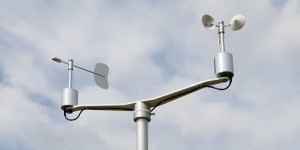 Instrumentation for wind energy applications is an important subject and has been discussed in detail by numerous authors. In addition, the performance test codes for wind turbines of the American Society of Mechanical Engineers and the measurement standards of the American Wind Energy Association contain much useful information on wind instrumentation equipment and procedures. For each wind energy application, the type and amount of instrumentation required varies widely.
Instrumentation for wind energy applications is an important subject and has been discussed in detail by numerous authors. In addition, the performance test codes for wind turbines of the American Society of Mechanical Engineers and the measurement standards of the American Wind Energy Association contain much useful information on wind instrumentation equipment and procedures. For each wind energy application, the type and amount of instrumentation required varies widely.
The headline "Chinese turbines" has dominated the news media and 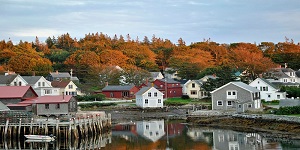 blogs regarding wind power during November after U.S. Sen. Charles Schumer sent a letter to U.S. Energy Secretary Dr. Steven Chu and commented, "I'm all for investing in clean energy, but we should be investing in the United States, not China. The goal of the stimulus was to spur job creation here, not overseas." Schumer was referring to a 648-megawatt wind farm in west Texas being developed by Cielo Wind Power and U.S. Renewable Energy Group with $450 million in funds from the American Recovery and Reinvestment Act.
blogs regarding wind power during November after U.S. Sen. Charles Schumer sent a letter to U.S. Energy Secretary Dr. Steven Chu and commented, "I'm all for investing in clean energy, but we should be investing in the United States, not China. The goal of the stimulus was to spur job creation here, not overseas." Schumer was referring to a 648-megawatt wind farm in west Texas being developed by Cielo Wind Power and U.S. Renewable Energy Group with $450 million in funds from the American Recovery and Reinvestment Act.
 blogs regarding wind power during November after U.S. Sen. Charles Schumer sent a letter to U.S. Energy Secretary Dr. Steven Chu and commented, "I'm all for investing in clean energy, but we should be investing in the United States, not China. The goal of the stimulus was to spur job creation here, not overseas." Schumer was referring to a 648-megawatt wind farm in west Texas being developed by Cielo Wind Power and U.S. Renewable Energy Group with $450 million in funds from the American Recovery and Reinvestment Act.
blogs regarding wind power during November after U.S. Sen. Charles Schumer sent a letter to U.S. Energy Secretary Dr. Steven Chu and commented, "I'm all for investing in clean energy, but we should be investing in the United States, not China. The goal of the stimulus was to spur job creation here, not overseas." Schumer was referring to a 648-megawatt wind farm in west Texas being developed by Cielo Wind Power and U.S. Renewable Energy Group with $450 million in funds from the American Recovery and Reinvestment Act.
Building a wind farm involves several steps to ensure successful planning, construction, and operation. Here are 10 key steps typically involved in the process. 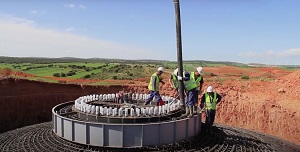 The most important factor to consider in the construction of a wind energy facility is the site's wind resource. A site must have a minimum annual average wind speed in the neighborhood of 11-13 mph to even be considered. Local weather data available from airports and meteorological stations may provide some insight as to averages. You can also check the wind maps for your state on the National Renewable Energy Laboratory Web site. In time, you will want to install your own monitoring devices to record the site's wind characteristics.
The most important factor to consider in the construction of a wind energy facility is the site's wind resource. A site must have a minimum annual average wind speed in the neighborhood of 11-13 mph to even be considered. Local weather data available from airports and meteorological stations may provide some insight as to averages. You can also check the wind maps for your state on the National Renewable Energy Laboratory Web site. In time, you will want to install your own monitoring devices to record the site's wind characteristics.
 The most important factor to consider in the construction of a wind energy facility is the site's wind resource. A site must have a minimum annual average wind speed in the neighborhood of 11-13 mph to even be considered. Local weather data available from airports and meteorological stations may provide some insight as to averages. You can also check the wind maps for your state on the National Renewable Energy Laboratory Web site. In time, you will want to install your own monitoring devices to record the site's wind characteristics.
The most important factor to consider in the construction of a wind energy facility is the site's wind resource. A site must have a minimum annual average wind speed in the neighborhood of 11-13 mph to even be considered. Local weather data available from airports and meteorological stations may provide some insight as to averages. You can also check the wind maps for your state on the National Renewable Energy Laboratory Web site. In time, you will want to install your own monitoring devices to record the site's wind characteristics.
Throughout history, wind has been used to move grain mills or push the vessels that sailed the seas. However, it was not until well into the 19th century that the first wind turbines capable of generating electricity from the wind were made. 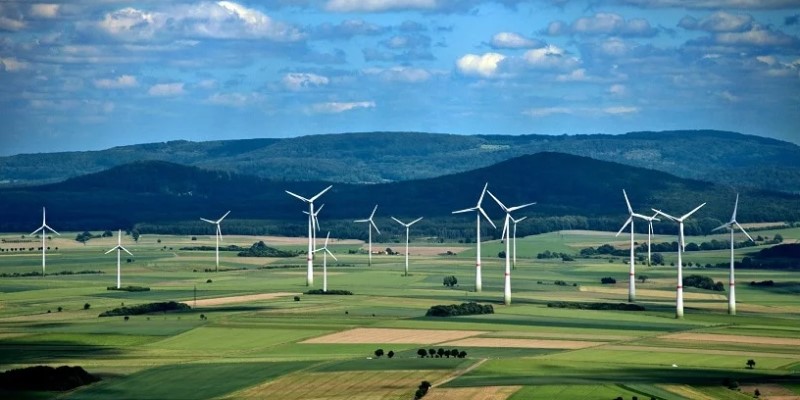 Currently, the high potential of wind energy and its strategic value place it as one of the renewable sources called to play a decisive role among the technologies that will allow us to achieve a climate-neutral European economy by 2050.
Currently, the high potential of wind energy and its strategic value place it as one of the renewable sources called to play a decisive role among the technologies that will allow us to achieve a climate-neutral European economy by 2050.
A wind farm, also known as a wind park, is an area of several square kilometers that houses an array of wind turbines to harness the winds from land or sea and generate electricity, which is fed into the grid for consumption.
 Currently, the high potential of wind energy and its strategic value place it as one of the renewable sources called to play a decisive role among the technologies that will allow us to achieve a climate-neutral European economy by 2050.
Currently, the high potential of wind energy and its strategic value place it as one of the renewable sources called to play a decisive role among the technologies that will allow us to achieve a climate-neutral European economy by 2050. A wind farm, also known as a wind park, is an area of several square kilometers that houses an array of wind turbines to harness the winds from land or sea and generate electricity, which is fed into the grid for consumption.
The International Renewable Energy Agency (IRENA) has explored global energy development options from two main perspectives to the year 2050 as part of the 2019 edition of its Global Energy Transformation report.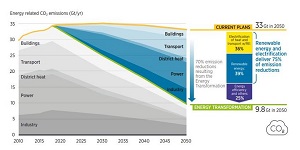 The first is an energy pathway set by current and planned policies, and the second is a cleaner, climate-resilient pathway based largely on more ambitious, yet achievable, uptake of renewable energy and energy efficiency measures. Reducing energy-related CO2emissions is at the heart of the energy transformation. Rapidly shifting the world away from the consumption of fossil fuels that cause climate change and towards cleaner, renewable forms of energy is key if the world is to reach the agreed-upon climate goals.
The first is an energy pathway set by current and planned policies, and the second is a cleaner, climate-resilient pathway based largely on more ambitious, yet achievable, uptake of renewable energy and energy efficiency measures. Reducing energy-related CO2emissions is at the heart of the energy transformation. Rapidly shifting the world away from the consumption of fossil fuels that cause climate change and towards cleaner, renewable forms of energy is key if the world is to reach the agreed-upon climate goals.
 The first is an energy pathway set by current and planned policies, and the second is a cleaner, climate-resilient pathway based largely on more ambitious, yet achievable, uptake of renewable energy and energy efficiency measures. Reducing energy-related CO2emissions is at the heart of the energy transformation. Rapidly shifting the world away from the consumption of fossil fuels that cause climate change and towards cleaner, renewable forms of energy is key if the world is to reach the agreed-upon climate goals.
The first is an energy pathway set by current and planned policies, and the second is a cleaner, climate-resilient pathway based largely on more ambitious, yet achievable, uptake of renewable energy and energy efficiency measures. Reducing energy-related CO2emissions is at the heart of the energy transformation. Rapidly shifting the world away from the consumption of fossil fuels that cause climate change and towards cleaner, renewable forms of energy is key if the world is to reach the agreed-upon climate goals.
A wind energy conversion system has a relatively simple construction that can be operated and maintained by the local population. The basic components are as follows. 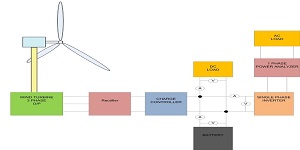 The main component of a wind energy conversion system is the windmill itself. A system of blades mounted on a tower is turned by the wind to either produce mechanical work directly, usually in the form of a water pump, or to use a generator to transform that mechanical work into electrical energy (wind turbine). Windmills and wind turbines vary in size and the corresponding amount of output they are capable of producing. The output depends mainly on the size of the blades and the wind's speed through the rotor.
The main component of a wind energy conversion system is the windmill itself. A system of blades mounted on a tower is turned by the wind to either produce mechanical work directly, usually in the form of a water pump, or to use a generator to transform that mechanical work into electrical energy (wind turbine). Windmills and wind turbines vary in size and the corresponding amount of output they are capable of producing. The output depends mainly on the size of the blades and the wind's speed through the rotor.
 The main component of a wind energy conversion system is the windmill itself. A system of blades mounted on a tower is turned by the wind to either produce mechanical work directly, usually in the form of a water pump, or to use a generator to transform that mechanical work into electrical energy (wind turbine). Windmills and wind turbines vary in size and the corresponding amount of output they are capable of producing. The output depends mainly on the size of the blades and the wind's speed through the rotor.
The main component of a wind energy conversion system is the windmill itself. A system of blades mounted on a tower is turned by the wind to either produce mechanical work directly, usually in the form of a water pump, or to use a generator to transform that mechanical work into electrical energy (wind turbine). Windmills and wind turbines vary in size and the corresponding amount of output they are capable of producing. The output depends mainly on the size of the blades and the wind's speed through the rotor.
Wind turbines convert the kinetic energy in moving air into rotational energy, which in turn is converted to electricity. Since wind speeds vary from month to month and second to second, the amount of electricity wind can make varies constantly. 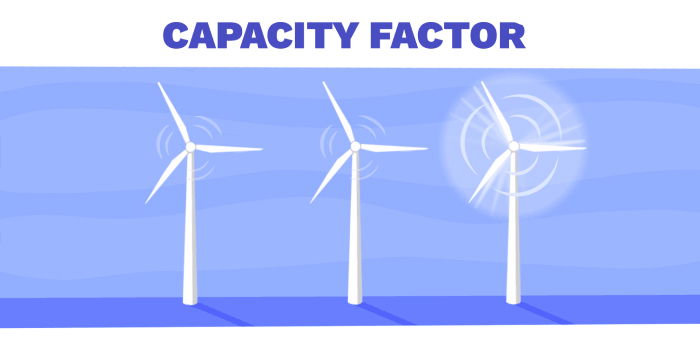

Sometimes a wind turbine will make no power at all. This variability does affect the value of the wind power, but not in the way many people expect. This article will give you an overview of what the capacity factor is and why it is important in wind power systems.
Capacity factor is the ratio of the actual energy produced in a given period, to the hypothetical maximum possible, i.e. running full time at rated power.
Capacity factor is the ratio of the actual energy produced in a given period, to the hypothetical maximum possible, i.e. running full time at rated power.
In the United States, most wind energy is commercially generated for delivery and sale on the grid. Wind projects vary in size, configuration, and generating capacity depending on factors such as the wind resource, project area, land-use restrictions, and turbine size.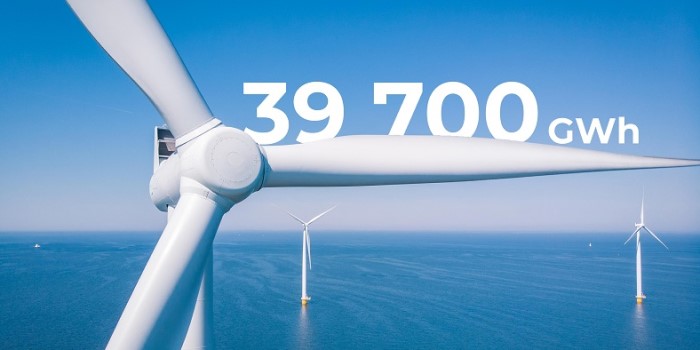 Large wind turbines are most commonly deployed in large groups or rows to optimize exposure to prevailing winds. They may also be installed as a single turbine or with just a few others connected directly to a distribution line.
Large wind turbines are most commonly deployed in large groups or rows to optimize exposure to prevailing winds. They may also be installed as a single turbine or with just a few others connected directly to a distribution line.
Because wind is a variable resource with changing speeds, power production levels can vary. The energy output of a facility can be measured over time, however, and expected yearly electricity production can be estimated. While turbines generate power, all other components of a wind plant aid in the transfer of that power to the grid.
 Large wind turbines are most commonly deployed in large groups or rows to optimize exposure to prevailing winds. They may also be installed as a single turbine or with just a few others connected directly to a distribution line.
Large wind turbines are most commonly deployed in large groups or rows to optimize exposure to prevailing winds. They may also be installed as a single turbine or with just a few others connected directly to a distribution line.Because wind is a variable resource with changing speeds, power production levels can vary. The energy output of a facility can be measured over time, however, and expected yearly electricity production can be estimated. While turbines generate power, all other components of a wind plant aid in the transfer of that power to the grid.
Wind results from the movement of air due to atmospheric pressure gradients. 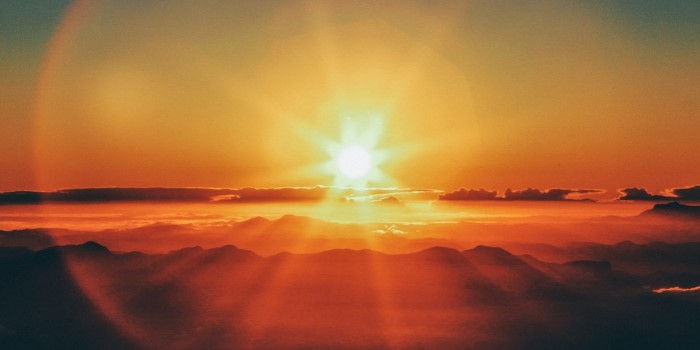 Wind flows from regions of higher pressure to regions of lower pressure. The larger the atmospheric pressure gradient, the higher the wind speed and thus, the greater the wind power that can be captured from the wind by means of wind energy-converting machinery.
Wind flows from regions of higher pressure to regions of lower pressure. The larger the atmospheric pressure gradient, the higher the wind speed and thus, the greater the wind power that can be captured from the wind by means of wind energy-converting machinery.
The generation and movement of wind are complicated due to a number of factors. Among them, the most important factors are uneven solar heating, the Coriolis effect due to the earth’s self-rotation, and local geographical conditions.
 Wind flows from regions of higher pressure to regions of lower pressure. The larger the atmospheric pressure gradient, the higher the wind speed and thus, the greater the wind power that can be captured from the wind by means of wind energy-converting machinery.
Wind flows from regions of higher pressure to regions of lower pressure. The larger the atmospheric pressure gradient, the higher the wind speed and thus, the greater the wind power that can be captured from the wind by means of wind energy-converting machinery.The generation and movement of wind are complicated due to a number of factors. Among them, the most important factors are uneven solar heating, the Coriolis effect due to the earth’s self-rotation, and local geographical conditions.
Wind is simple air in motion. It is caused by the uneven heating of the earth’s surface by the sun. Since the earth’s surface is made of very different types of land and water, it absorbs the sun’s heat at different rates.During the day, the air above the land heats up more quickly than the air over water. 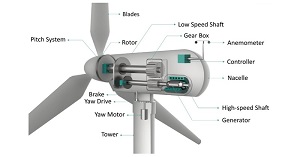 The warm air over the land expands and rises, and the heavier, cooler air rushes in to take its place, creating winds. At night, the winds are reversed because the air cools more rapidly over land than over water.
The warm air over the land expands and rises, and the heavier, cooler air rushes in to take its place, creating winds. At night, the winds are reversed because the air cools more rapidly over land than over water.
In the same way, the large atmospheric winds that circle the earth are created because the and near the earth's equator is heated more by the sun than the land near the North and South Poles. Today, wind energy is mainly used to generate electricity. Wind is called a renewable energy source because the wind will blow as long as the sun shines.
 The warm air over the land expands and rises, and the heavier, cooler air rushes in to take its place, creating winds. At night, the winds are reversed because the air cools more rapidly over land than over water.
The warm air over the land expands and rises, and the heavier, cooler air rushes in to take its place, creating winds. At night, the winds are reversed because the air cools more rapidly over land than over water.In the same way, the large atmospheric winds that circle the earth are created because the and near the earth's equator is heated more by the sun than the land near the North and South Poles. Today, wind energy is mainly used to generate electricity. Wind is called a renewable energy source because the wind will blow as long as the sun shines.
Wind power is a renewable energy resource, which means that unlike fossil fuels, it can never run out. Wind is a product of the sun heating the earth unevenly. When a warm patch of air meets a cool patch of air, it creates wind.People have been harnessing the power of wind since the first sailboat.The exact date of this invention is unknown, but it is pictured by the ancient Egyptians around 3200 BCE.
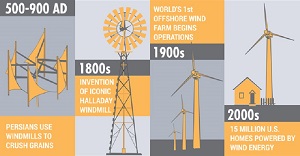
Wind power helped Persians pump water and grind grain between 500 and 900 B.C. As cultures harnessed the power that wind offered, the use of windmills spread from Persia to the surrounding areas in the Middle East, where windmills were used extensively in food production. Eventually, around 1,000 A.D., wind power technology spread north to European countries such as The Netherlands, which used windmills to help drain lakes and marshes.The first electricity-generating windmill was built in Scotland in 1887 by Prof James Blyth.
Wind is moving air. We can use the energy in wind to do work. Early Egyptians used the wind to sail ships on the Nile River. People still use wind to move them in sailboats. In the Netherlands, people used windmills to grind wheat. The Pilgrims used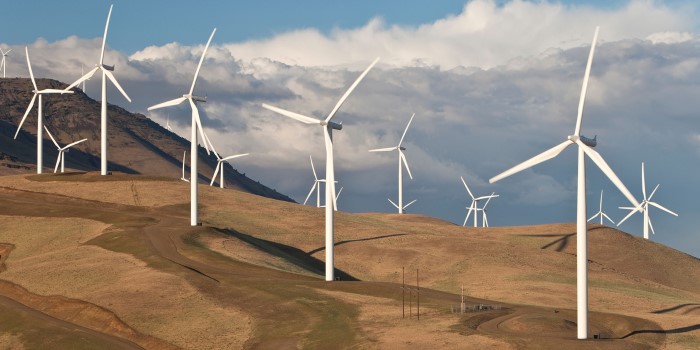 windmills to grind corn, to pump water, and to run sawmills. Today, we use wind to make electricity.
windmills to grind corn, to pump water, and to run sawmills. Today, we use wind to make electricity.
Wind energy is a converted form of solar energy which is produced by the nuclear fusion of hydrogen (H) into helium (He) in its core. The H → He fusion process creates heat and electromagnetic radiation streams out from the sun into space in all directions. Though only a small portion of solar radiation is intercepted by the earth, it provides almost all of earth’s energy needs.
 windmills to grind corn, to pump water, and to run sawmills. Today, we use wind to make electricity.
windmills to grind corn, to pump water, and to run sawmills. Today, we use wind to make electricity.Wind energy is a converted form of solar energy which is produced by the nuclear fusion of hydrogen (H) into helium (He) in its core. The H → He fusion process creates heat and electromagnetic radiation streams out from the sun into space in all directions. Though only a small portion of solar radiation is intercepted by the earth, it provides almost all of earth’s energy needs.

Featured Articles
Basics of Wind Farms
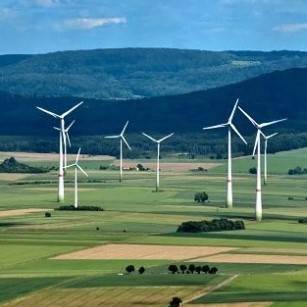 Throughout history, wind has been used to move grain mills or push the vessels that sailed the seas. However, it was not ...
Throughout history, wind has been used to move grain mills or push the vessels that sailed the seas. However, it was not ...
 Throughout history, wind has been used to move grain mills or push the vessels that sailed the seas. However, it was not ...
Throughout history, wind has been used to move grain mills or push the vessels that sailed the seas. However, it was not ...What is a Capacity Factor?
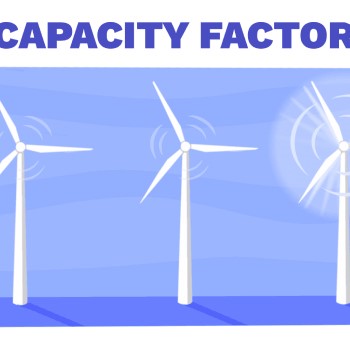 Wind turbines convert the kinetic energy in moving air into rotational energy, which in turn is converted to ...
Wind turbines convert the kinetic energy in moving air into rotational energy, which in turn is converted to ...
 Wind turbines convert the kinetic energy in moving air into rotational energy, which in turn is converted to ...
Wind turbines convert the kinetic energy in moving air into rotational energy, which in turn is converted to ...Basics of Wind Energy Production
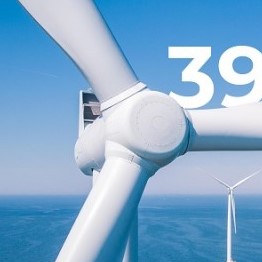 In the United States, most wind energy is commercially generated for delivery and sale on the grid. Wind projects vary in ...
In the United States, most wind energy is commercially generated for delivery and sale on the grid. Wind projects vary in ...
 In the United States, most wind energy is commercially generated for delivery and sale on the grid. Wind projects vary in ...
In the United States, most wind energy is commercially generated for delivery and sale on the grid. Wind projects vary in ...What is Wind Energy?
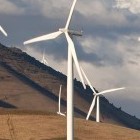 Wind is moving air. We can use the energy in wind to do work. Early Egyptians used the wind to sail ships on the Nile River. ...
Wind is moving air. We can use the energy in wind to do work. Early Egyptians used the wind to sail ships on the Nile River. ...
 Wind is moving air. We can use the energy in wind to do work. Early Egyptians used the wind to sail ships on the Nile River. ...
Wind is moving air. We can use the energy in wind to do work. Early Egyptians used the wind to sail ships on the Nile River. ...